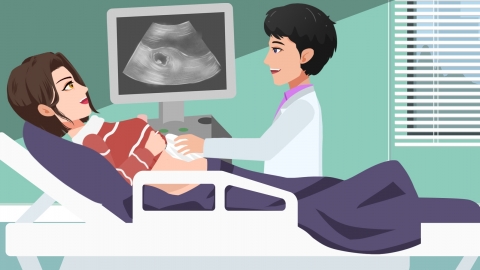What can be detected by ultrasound at six weeks of pregnancy?
An ultrasound at six weeks of pregnancy typically allows for the examination of the location and size of the gestational sac, the presence of the yolk sac, the appearance of the fetal pole, the condition of the uterus and adnexa, and the number of embryos. If there are any concerns, it is recommended to seek medical advice in advance. Detailed analysis is as follows:

1. Location and size of the gestational sac: An ultrasound can clearly show whether the gestational sac is located within the uterine cavity, thereby ruling out the possibility of an ectopic pregnancy. Additionally, by measuring the diameter of the gestational sac, the early development of the embryo can be preliminarily assessed in relation to the gestational age.
2. Presence of the yolk sac: In some pregnant women, the yolk sac can be observed via ultrasound at six weeks of pregnancy. The yolk sac is a structure in the early development of the embryo and is important for the embryo's early growth.
3. Appearance of the fetal pole: For embryos developing more quickly, the fetal pole may be visible on ultrasound at six weeks. The fetal pole represents the early stage of embryonic development, and if observed, its morphology can be further examined to assess the embryo's developmental status.
4. Condition of the uterus and adnexa: Ultrasound can also check whether the size of the uterus corresponds to the duration of amenorrhea and observe whether the bilateral adnexa appear normal. This helps assess the overall health status of the mother and provides a basis for prenatal care.
5. Number of embryos: Ultrasound can determine the number of embryos, indicating whether it is a singleton or multiple pregnancies. In the case of multiple pregnancies, further differentiation can be made between dizygotic and monozygotic twins, as well as the chorionicity of twins, such as monochorionic-diamniotic or dichorionic-diamniotic pregnancies.
If no obvious abnormalities are found during this ultrasound but the pregnant woman still experiences discomfort or has concerns, a follow-up examination can be conducted at an appropriate time under medical guidance. Furthermore, ultrasound results should be interpreted and evaluated by a qualified physician.








